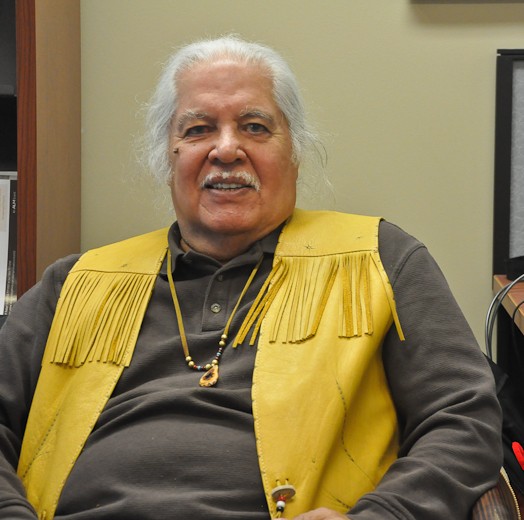It was a hectic Monday morning. People rushed by, struggling to get back into the flow of school, work, and their mounting to-do list. But a small group of people ducked inside the Aboriginal Lounge in the Tory Building.
As they walked in, they were greeted by Elder Paul Skanks, a Mohawk traditional teacher. He held a smoking shell in his hands and as each person stepped up, he swirled the smoke around their hands, and brought it up to wash over their face and body.
Some turned around and Skanks brushed their backs with a hawk wing fan.
They had just participated in a smudging ceremony, which is held every Monday morning in the lounge.
“It is a cleansing, or a process where we bring ourselves into balance,” Skanks said.
The smoke is an important part of the ceremony—it can be made up of either one, or a mixture of four medicines: sage, sweetgrass, cedar, and tobacco.
Sage works with negative energy, sweetgrass works with positive energy, and cedar works as a stabilizer, Skanks explained.
“The tobacco is the medium that has the ability to take our thought and direct our thought to wherever we want to send it,” he said.
“And that is the most powerful of the medicines that we were given.”
Once everyone was seated, Skanks sent a greeting to the natural world.
“The first human beings were instructed to send a greeting to the natural world, to thank them because, without them, we don’t exist.”
The smudging ceremony is part of a full-day affair.
Skanks began the day with the ceremony in the centre, but then carried on to Dunton Tower, where he taught and led a discussion on storytelling.
Skanks is part of the Elders Program, which is put on by the Centre for Aboriginal Culture and Education (CACE).
Irvin Hill, the aboriginal cultural liaison officer for CACE, said the Elders Program is important for students at Carleton.
“For our students coming from off campus who are looking for that connection, whether it’s a new connection or just getting back in to what they were doing before they left home, it’s an integral part of what we’re doing here at Carleton,” he said.
Hill said many aboriginal students who come to Carleton do not see themselves reflected in their environments, or in the people around them.
“Bringing this culture back in and reintroducing that in to the institution is something the students are looking for and what they need,” he said.
Skanks said he agrees. He said he sees himself as a teacher, and hopes to teach both aboriginal and non-aboriginal students about his culture.
“My whole idea is to start out by trying to tell the non-native world who we really were. People don’t understand who we are and the richness of our cultures,” he said.
But Skanks also said we need to look at the bigger picture, and not limit how we see the world.
“When we share our culture that way — doesn’t matter if it’s a Middle Eastern culture, an African culture, an Asian culture — it just broadens our understanding. Peoples’ ideas will change and that’s healthy,” he said.
“And hopefully that will make for, if not a better world, then it will better our lives individually.”






